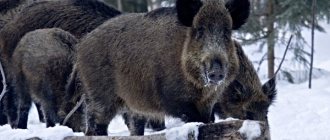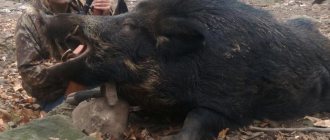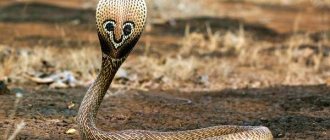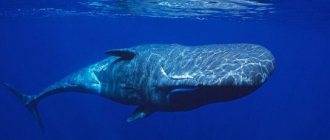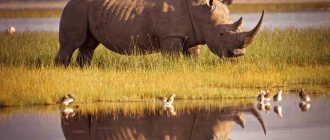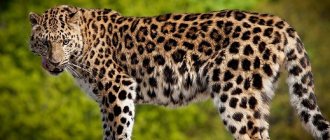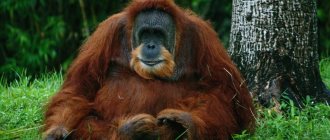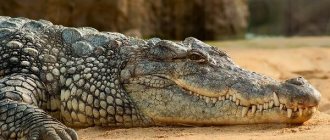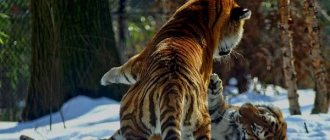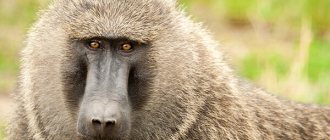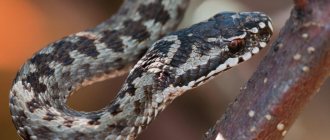The wild boar is a fairly large animal that can reach up to one and a half meters in length. The weight of an adult varies from 150 to 300 kilograms. The boar's bristly fur resembles the coloration of a bear with a slight reddish tint. Their distinctive feature can be called large lower fangs, the size of which can be about 25 centimeters. This dexterous and agile animal is capable of accelerating up to 40 km per hour, which makes it elusive for both wild animals and hunters. On top of that, the wild boar swims well and jumps at a distance of 3.5 meters.
The role of fangs
The main function performed by the fangs of a wild boar is defense and attack. The main threat to this animal may be a pack of wolves, hunters or a bear. When attacked, a boar is capable of inflicting lacerations thanks to its tusks. Everyone knows that the boar is an animal that people hunt with pleasure. You should know that this beast is not so stupid. There have been many cases when wild boars lured a person to the reeds using various tricks, after which they suddenly attacked. It is very difficult to escape from the fangs of an angry boar; they are deadly. When an animal is wounded, it becomes enraged and may attack in response. In such a wounded and enraged state, even the wolves do not touch him.
Where does he live?
The distribution range of wild boar is quite wide. The species lives in deciduous and mixed forests of Europe (from the Atlantic to the Urals), in the Mediterranean region, in northern Africa, in the steppes of Central Asia, in the northeast of Western Asia and in southeast Asia. There are also island populations of wild boar in all the seas and oceans of our planet.
Wild boar habitats
The boar (wild boar) is a fairly common species that lives throughout Europe, Asia, America and other tropical places. This animal has taken root both in coniferous forests and deserts. The most favorite place for such wild boars is oak forests. Very often such a large wild boar is found in the Caucasus and Transbaikalia near mountain rivers. The boar is a herd animal. Females are smaller in size than males and have a smaller habitat with piglets than a male. Its territory depends on the saturation of food in a particular place. These stray animals are capable of traveling several kilometers in one day in search of food.
Nutritional Features
What does it eat?
The wild boar is an omnivore and in this regard it is practically the same as a human. Its diet includes mainly plant foods, which vary by season (tubers, roots, rhizomes, bulbs, fruits, acorns, seeds, nuts, berries, mushrooms, tree bark, rags, shoots), as well as various small animals (worms, molluscs, frogs, lizards, snakes, rodents, insectivores, bird eggs and insect larvae), and carrion. Specific food preferences depend on the area of residence and the time of year.
How much does he eat?
An adult wild boar consumes 3-6 kg of feed per day, obtaining the bulk of its food from the forest litter and soil.
Benefit
Loosening the soil by wild boars promotes seed placement and subsequent tree regeneration. These animals also destroy forest pests, which is beneficial.
Harm
In times of famine, wild boars, on the contrary, visit potato and other fields and harm agriculture by tearing up and trampling crops. Sometimes they attack birds and hares, and occasionally fallow deer, roe deer or deer if they are weak or sick.
A number of poisonous plants and snake venom do not affect wild boars.
Wild boar offspring
An animal such as the boar (wild boar) is divided into 25 subspecies, which are characterized by a stocky body with a large head, wide ears and small eyes. All adults protect their herds. Each female is capable of producing approximately five piglets annually, each of which can weigh about half a kilogram after birth. Nature itself took care of the safety of the babies and painted them with stripes, which makes small wild boars less noticeable, unlike adult boars with a dark color. Since wild pigs most often unite in huge herds in the fall to protect their young, even wolves do not always decide to attack pig offspring.
Description
Size
— Advertising —
The body length of adult wild boar reaches 175 cm, height is about 1 m. Weight is up to 100 kg, occasionally from 150 to 200 kg.
Body
This animal differs from domestic pigs in its short and dense build, thick and high limbs, long and thin head, longer, sharper and erect ears. The upper and lower fangs are constantly growing and protrude upward from the mouth.
Bristle
The body of a wild boar is covered with elastic bristles, except for the bottom of the neck and the back of the abdomen; on the back there is a kind of mane with a comb from it. In winter, a thick and soft undercoat begins to grow under this bristle.
Color
The color of the bristles is black-brown with a yellowish tint, the undercoat is brownish-gray, so the overall color is regarded as gray-black-brown, the muzzle, tail, legs and hooves are black. Variegated or piebald individuals are occasionally found.
Body Features
— Advertising —
The neck is massive, thick, short, the head is large, wedge-shaped, the ears are long, wide, and the eyes are small. A powerful snout with a snout protrudes forward and allows the animal to dig the ground, even frozen, to a depth of 15-17 cm. The tail is straight, 20-25 cm in length, decorated with a tassel at the tip. Makes sounds similar to a domestic pig (grunts and squeals). When running, it reaches speeds of up to 40 km/h. Swims well.
Boar character
Most boars prefer to spend their day in gray, marshy areas, wallowing in holes. In case of danger, this huge boar is able to escape through thickets impenetrable to other animals, swim across a water obstacle, and, if necessary, attack. After all, everyone knows that the best defense is an attack. The big boar tries to avoid meeting people, but there are often cases when hunters and dogs run into trouble themselves and they can find it. A pig's hearing is quite well developed, so for everyone's safety, feeding is done at night. The behavior of females should also be noted, because for the sake of their offspring they are ready to go into fire, into water, and even into an armed man, whom they will pursue to the last.
Commercial value
Wild boar is of particular commercial interest because it has valuable meat, skin and bristles. The weight of wild animals in winter is 10 percent more than in summer. By killing a wild boar, a hunter can provide himself with an average of 50 kilograms of meat. In addition, up to 300 decimeters of square leather are obtained.
Important point! Hunting for wild boar comes down to watching for animals in watering places and places of food, as well as on their trails. In addition, these animals are hunted with the help of dogs.
A wild boar is an agile and fast animal, so when it is on the move, either alone or in a group, it is not easy to hit with a gun. A wounded animal is very dangerous, so a meeting with such a boar can be fatal for a hunter.
Precautionary measures
In order not to run into such a deadly animal as a boar once again, it is recommended to act as follows:
- Be as careful as possible and do not come close to a flock of wild boars. It's best to leave before the person is spotted.
- If you happen to stumble upon a piglet, you should keep in mind that the mother is definitely somewhere nearby.
- If tracks of a boar are found, it is better to go in the other direction, away from this pig trail.
- When a boar takes a person by surprise, there is no need to attack him. The best way out of this situation is to climb a tall tree and hide for a while.
Video
And in conclusion, an interesting documentary about wild boars - “The Boar is a Born Fighter.”
Author: Pavel Chaika, editor-in-chief of Poznavaika magazine
When writing the article, I tried to make it as interesting, useful and high-quality as possible. I would be grateful for any feedback and constructive criticism in the form of comments on the article. You can also write your wish/question/suggestion to my email [email protected] or Facebook, with respect, the author.
Author page
Hatching of offspring
Pregnancy of females can last about 120 days, after which they are temporarily separated from their herd to build a nest in some quiet place. The new “home” for the brood looks more like a hut made of branches. During this crucial period, the mother becomes as aggressive as possible, which allows her to reliably protect and protect her cubs. Unlike males, the female does not have huge, terrifying fangs, but this does not mean at all that she is not dangerous. When defending or attacking, she is capable of overpowering and trampling her victim to death. After the offspring grow up, all family members return to the herd.
Reproduction
The mating season for wild boars occurs at different times, depending on climatic conditions; in our latitudes it is usually autumn. At this time, male boars begin active courtship of females, sometimes real skirmishes occur between them, as a result of which the strongest boar gets the female.
The pregnancy of a female boar usually lasts 115 days, and from 3 to 10 small piglets can be born at a time. The first days of their lives, piglets (or young boars) are under the full care of their mother, staying in a cozy improvised “nest” that the boar has prudently prepared for them. Then, having matured a little and become stronger, they and their mother return to the herd.
Little piglets follow their mother everywhere and feed on her breast milk for up to three to four months. Then they begin to gradually mature and after a year and a half, female wild boars become sexually mature. But males mature a little longer; they become sexually mature only at 5-6 years.
Life in the wild
Nature provides for everything, but this does not mean at all that life in this world will be without difficulties and obstacles, even for wild boars. Without a doubt, the boar's tusks are a powerful weapon and assistant throughout the entire period of their existence. But it is impossible to predict weather conditions that significantly complicate their lives. Snow makes it difficult for them to move, as a result of which the animals are able to overcome only one and a half kilometers, which threatens them with hunger and no fangs or speed of the animal will help with this.
The skin of a boar is quite thick, especially in the thigh area. Many hunters know this firsthand. An animal wounded in the thigh is worse than a healthy one, since such an angry animal is capable of fighting the offender to the last.
Everyone knows that the boar is an animal that emits a terrible roar that can put anyone into a stupor. When meeting an animal, you need to remember that it has an excellent sense of smell and hearing, but its vision is slightly impaired - this can be used in certain situations to save itself. In the wild, when this huge boar comes face to face with an opponent, he will never back down, no matter how many enemies surround him.
Interesting Facts
- The ancestors of the modern domestic pig are wild boars of Mesopotamia, Asia Minor, Europe and China, which people domesticated back in the Neolithic era. According to archaeologists, wild pigs were domesticated in the Middle East 13,000 to 12,700 years ago. At first they were kept in a semi-wild state in the wild, as is the case now, for example, in New Guinea. The remains of pigs were discovered by scientists in Cyprus, where they could only have arrived from the mainland along with people. The first domestic pigs were brought to Europe from the East, after which an active process of domestication of European wild pigs began. It happened quite quickly thanks to the high adaptability and omnivorous nature of wild pigs. These animals were bred for their tasty meat, and their skins (for making shields), bones (for creating tools and weapons) and bristles (for brushes) were also used. In India and China, wild boars ate human waste and were even called “pig toilets.”
Appearance of a wild boar
The boar is an animal with a rather unusual appearance. Its body can be divided into two parts: back and front. From the front, the boar is huge and massive, has a large head that smoothly flows into the body, which tapers strongly at the back. That's why he looks slightly hunched over. The comb, which stretches along the entire back, gives aggressiveness. Upon reaching three years of age, the boar develops two pairs of powerful tusks. Females are very different in this matter from their partners. These weapons can become sharper and more dangerous over the years, since wild boars constantly sharpen them on stones and frozen ground. The wild boar is an animal that resembles a kind of tank, capable of making its way through even the most impenetrable thickets with lightning speed. This allows you to save your life if necessary. And the animal’s favorite pastime is mud baths.
The body of a boar is so dense and knitted that it more closely resembles a bristly shell, which not every hunter can pierce, but can easily irritate the beast. This animal is unusually strong and is capable of turning over huge stones and picking out ground frozen to 10 centimeters. Of course, meeting one-on-one with such a powerful killer as a boar is a sad story, but one should not give in to panic, even if the beast squeals and tries to intimidate a person. You must always soberly assess the situation. If you do not approach the animal and its cubs, do not provoke it, and do not get noticed, then problems can be avoided. As a last resort, it is recommended to climb the nearest tree - this is the only correct option.
Habits
Wild boars lead a predominantly gregarious lifestyle. They gather in herds that include several females and their young. Adult males prefer to live separately and join groups only during the rut. When two loppers join the herd, skirmishes occur between them for the right to cover the females.
During the daytime, the animals hide in a den made of branches and grass. The shelter is usually located in thickets of bushes or tall grass. Wild boars overwinter in pits: they tear up the snow, dig out last year's leaves and lay down on them.
Despite its threatening appearance, the wild boar is a cautious animal: it moves carefully through the forest, and upon hearing loud sounds or foreign odors, it immediately hides in a shelter and remains there, waiting out danger.
FOX
Noble deer
The artiodactyl mammal of the deer family has many subspecies, which are not very different from each other in appearance, but have different names - red deer, wapiti, wapiti, European deer, etc. The male is distinguished by the round trunks and branches of his antlers, while the females are deprived of such decoration. The red deer has a broad chest, an elongated head and expressive eyes with oblong pupils. Its height is about 1.5 m, and its weight is 100-300 kg. Deer live in small herds led by a female. They move quickly and very gracefully, easily making long jumps and overcoming various obstacles.
Desperate males
During the mating season, which begins in the fall for red deer, males organize harems consisting of several females. They attract individuals of the opposite sex with a deafening roar, which can be heard for many kilometers for a whole month. During this period, fights are possible between males, thanks to which the animals establish primacy. Rivals clash their horns, and the weakest individuals leave the battlefield. Fights extremely rarely end tragically, although there are cases when males are so intertwined with horns that they cannot disentangle themselves. In this case, they need human help, otherwise they may die of starvation. You can tell whether a male is strong or weak not only by his appearance, but even by his voice. A strong and experienced deer has a hoarse and low voice, while a young and weak one has a high and clear voice. Among the males there are also hornless individuals - they do not participate in fights, but try to quietly get into someone else's harem.
Common badger
This is a predatory mammal of the mustelid family, the only species in the genus of badgers living in Europe. Its body length is 60-90 cm, and its weight is up to 30 kg. The badger inhabits almost all of Europe. It lives in forests, forest-steppes and mountains. Prefers dry areas overgrown with small forests, dense bushes and grass. In the mountains it settles in rock cracks. The badger lives in deep burrows that it digs along the slopes of hills and ravines. The badger hole has several passages and exits, and in the middle there is a cozy room with bedding. The badger leaves its hole only at night, when it goes in search of food, which consists of roots, fruits, insects, frogs, field mice, partridges and bird eggs. During the winter, the badger hibernates.
